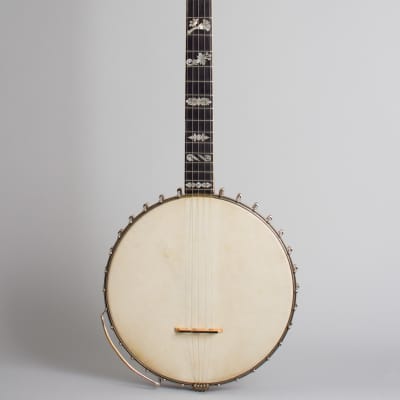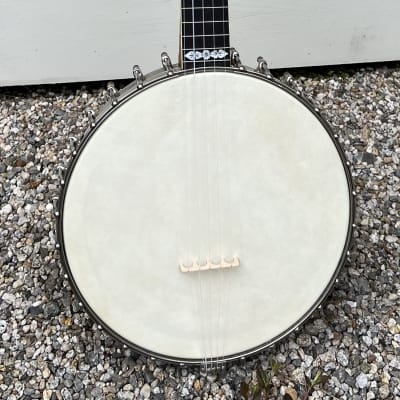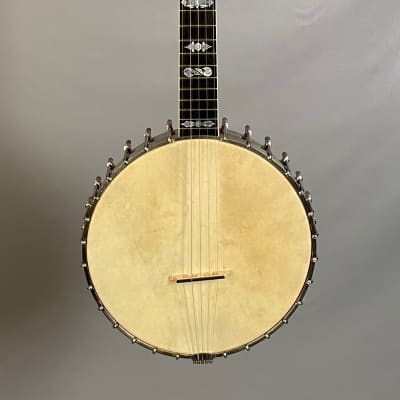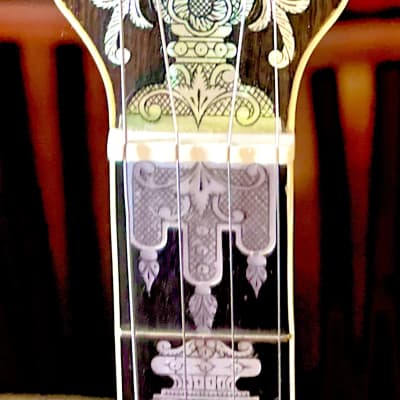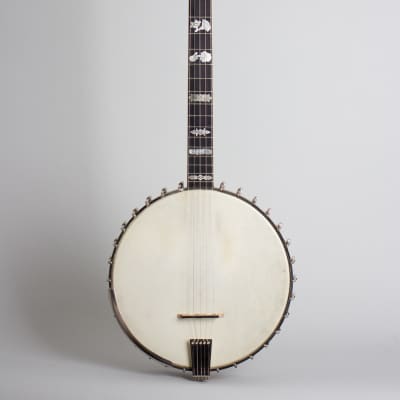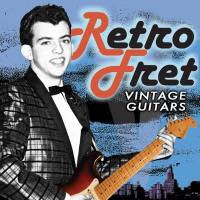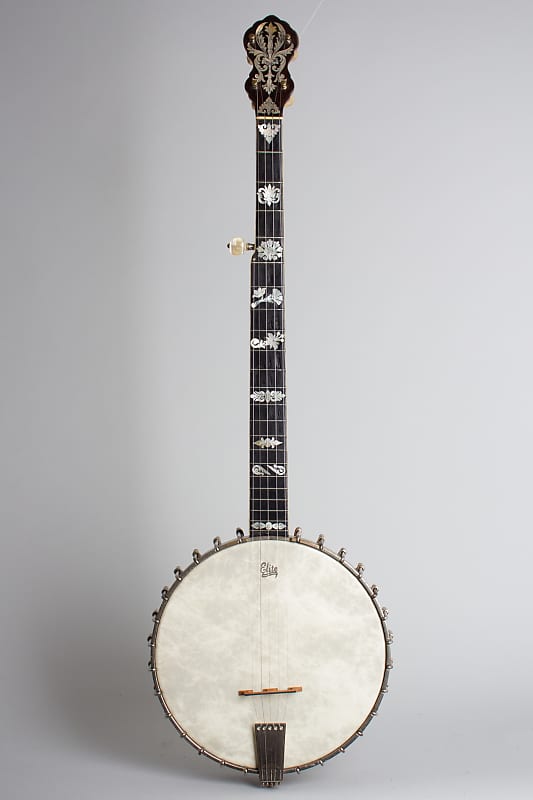

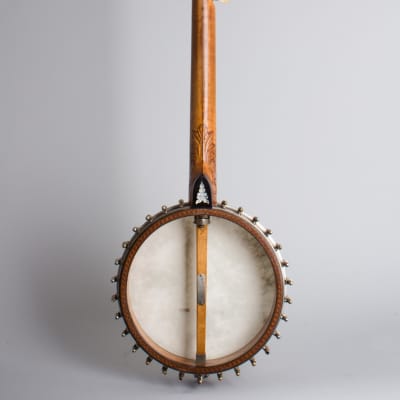
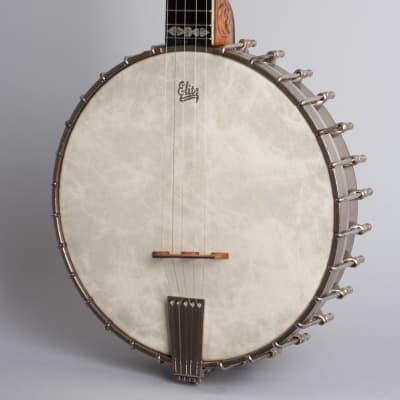
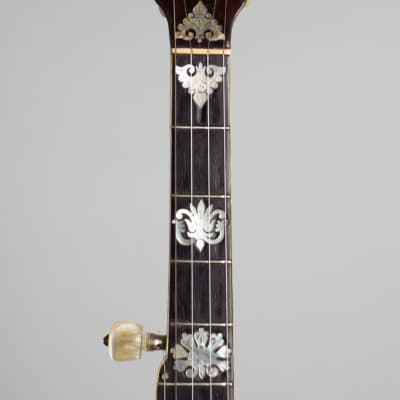
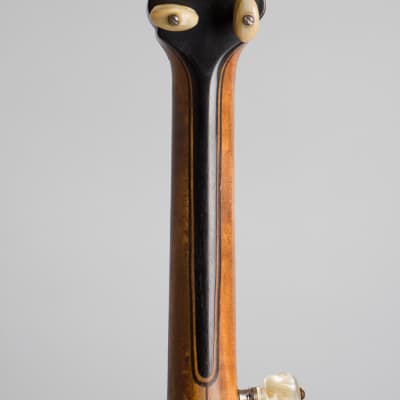
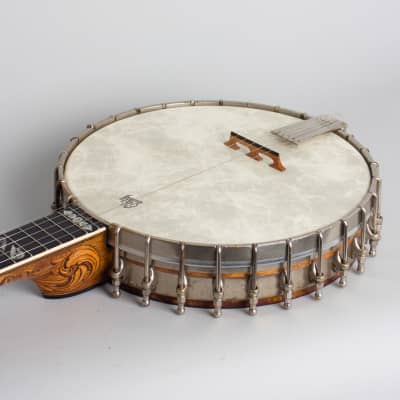
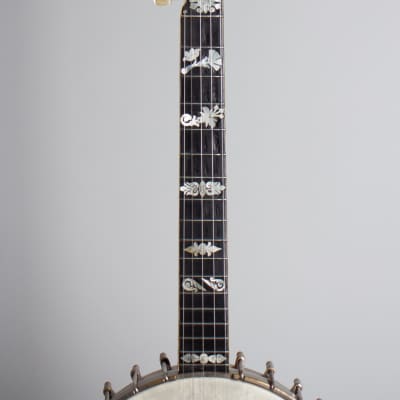
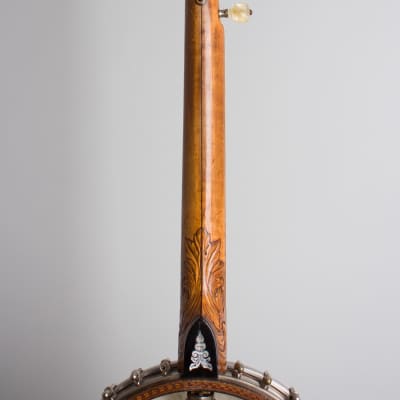
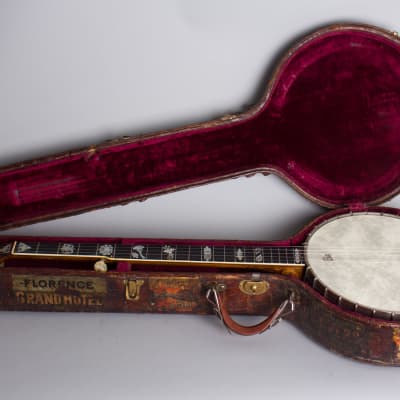
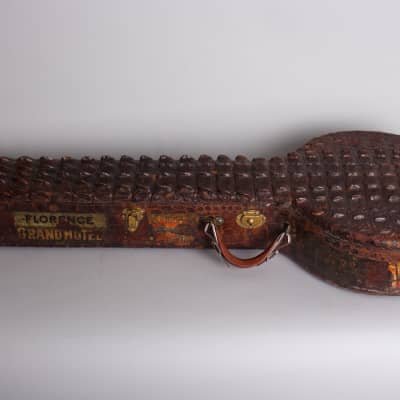
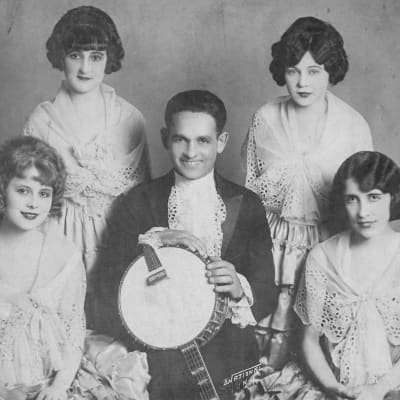
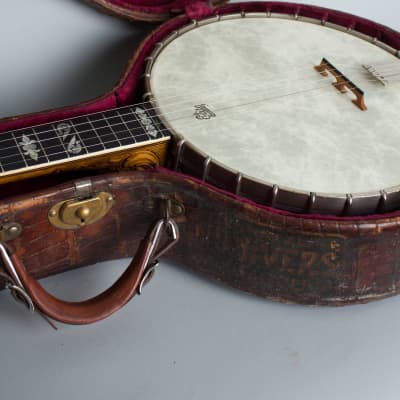
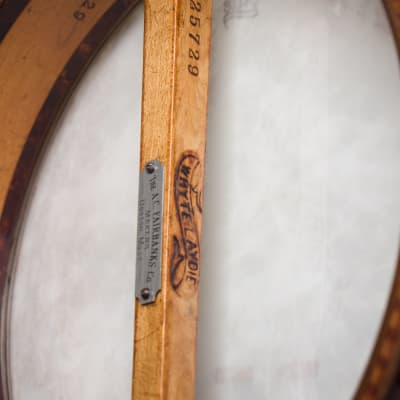
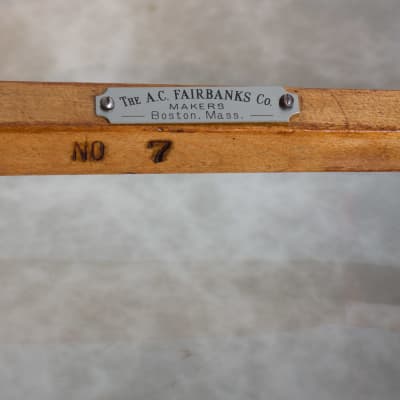
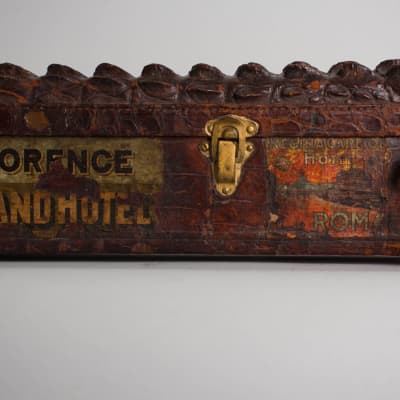
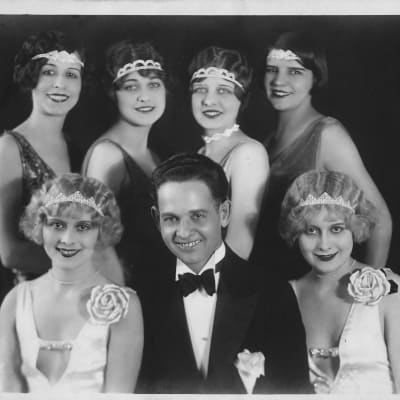
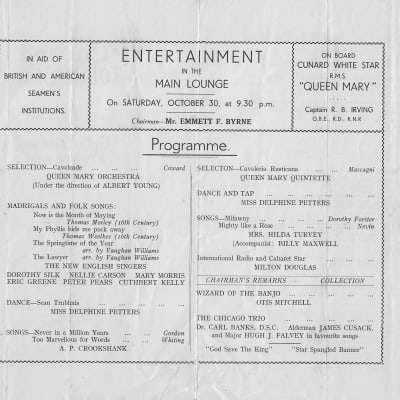
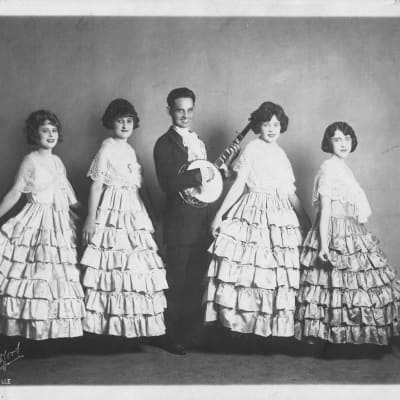
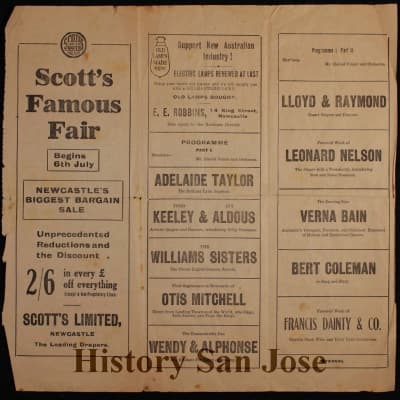
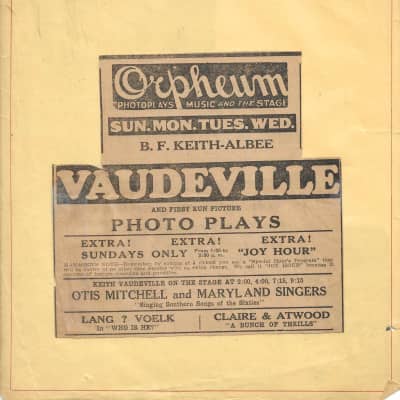
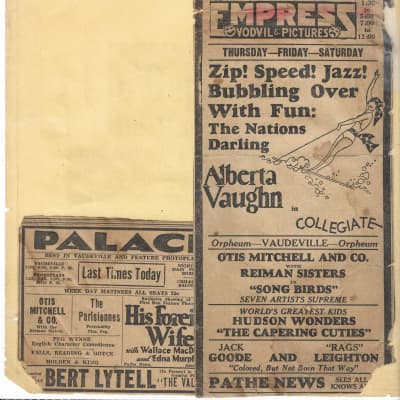
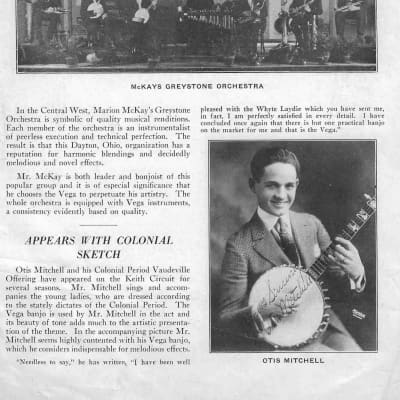
Fairbanks Whyte Laydie # 7 Owned and Used by Otis Mitchell Model 5 String Banjo (1909), made in Boston, Mass., serial # 25729, natural varnish finish, laminated maple rim and neck, ebony fingerboard, genuine alligator hard shell case. This banjo is a very well-traveled example of one of the most desired of all openback 5-strings, the Fairbanks Whyte Laydie #7. This 1909 instrument was a longstanding performance banjo for one Otis Mitchell, a somewhat celebrated Vaudeville performer active in the 1910s and '20s. Mitchell was a longstanding Vega Endorser, appearing in ads for the company as early as 1914 up through the later 1920s. At some point he commissioned a truly spectacular traveling case for the instrument, not just alligator-grained but fashioned them the hide of an actual alligator, and a grown one at that! While Otis Mitchell does not appear to have recorded, he was busy for years as a performer notably on the Keith-Albee Vaudeville circuit. He traveled the world singing, telling stories and playing the banjo, performing in 1921 as far-off as Australia and New Zealand. This was reviewed thus: "Otis Mitchell, fresh from the United States, impresses one by his breeziness, and also by his ability on the banjo. He tells a number of stories that got over very nicely, but his musical interpolations were the more generally successful". He was somewhat unusual by the later 1920s for sticking to the "old fashiooned" 5-string banjo instead of adopting the tenor or plectrum. This may have had something to do with the nature of his act, described in a Vega promotion as a "Colonial Period Vaudeville Offering" in which he sang and accompanied four young ladies "dressed according to the stately dictates of the Colonial period". Another billing was "Otis Mitchell and Maryland singers" described as "Singing Southern Songs of the Sixties"; the 1860s that is. He also toured with a group called the Reiman sisters, one of whom (Desmonda) he married in 1927. He at least once played (apparently solo) on the White Star liner the Queen Mary, described there as "Wizard of the banjo". This Whyte Laydie #7 was Mitchell's primary instrument by the 1920s at the latest, he is pictured with it in several photos of the period. This was the highest grade cataloged Whyte Laydie model, an exceptionally beautiful banjo for the eyes as well as the ears! "The Vega banjo is used by Mr. Mitchell in the act and its beauty of tone adds much to the artistic presentation" noted Vega in a promotional feature on him. He appears to have only played high-end Vega banjosThis #7 is built on a just-under 11" diameter rim with a 27" scale neck, one of the standard patterns. It features the elaborate early Fairbanks trademark hand-engraved pearl inlay on the headstock and bound fingerboard. The headstock face has an intricate scrolled pearl floral pattern while the famous "gryphon" ornaments the rear. The heel is elaborately carved in a floral pattern with a pearl-inlaid laminated ebony heelcap. The rim is equipped with Fairbanks' patented bracket band with the shoes are mounted to that, not drilled through. It is topped with the "Electric" tone ring that was the finest of its time and still a standard fitting today, over 125 years since its invention. The lower edges are capped with tortoise celluloid with elaborate herringbone marquetry along the bottom. The tailpiece is an original period Kershner Unique and the original friction tuners are fitted with genuine pearl buttons. The world-beating Fairbanks models of this era were mostly the brainchild of David L. Day, chief engineer at Fairbanks/Vega and arguably the most important (if unsung) banjo designer of all time. His many instrument innovations set the pattern for what is now considered the traditional openback banjo and have been widely copied for decades, yet few players even know his name. No matter, even 110+ years on this special Whyte Laydie #7 remains a glowing testament to the artistry of its designers and builders, and the man who played it for much of an eventful career. This instrument justifies its longstanding reputation as one of the finest banjos ever made, continuing to produce a wonderful sound that few other banjos, new or old, can match.Overall length is 37 1/16 in. (94.1 cm.), 10 13/16 in. (27.5 cm.) diameter head, and 2 1/2 in. (6.4 cm.) in depth, measured at side of rim. Scale length is 27 in. (686 mm.). Width of nut is 1 1/4 in. (32 mm.). This banjo is in well-used but also well cared for original condition, showing the sort of general wear one would expect in a long-serving performance instrument that is well over 110 years old. The finish has had a clear overcoat added, probably 80+ years ago. This has ambered very nicely but the neck finish in particular feels a bit thicker than the very thin original varnish, and even this is heavily wore through from play along much of the spine.The original plating shows wear including some loss and many
Reverb Buyer Protection
Reverb has your back if your item is lost, damaged, or doesn't match its description. Simply report any issues within 7 days and we'll help you get a full refund.Learn more about Reverb Buyer Protection.
| Listed | 2 years ago |
| Condition | Very Good (Used) Very Good items may show a few slight marks or scratches but are fully functional and in overall great shape.Learn more |
| Brand | |
| Model |
|
| Finish |
|
| Categories | |
| Year |
|
